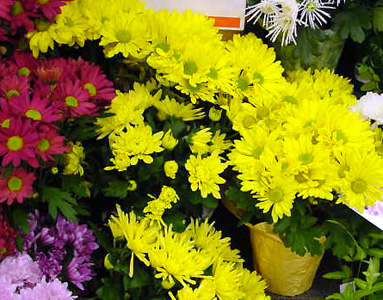Step into a world of timeless beauty with Chrysanthemums, where nature’s artistry unfolds in each delicate petal. Revered for centuries, the Chrysanthemums stand as a symbol of love, joy, and celebration, making them a classic choice for any occasion.
Enduring Beauty
Chrysanthemums, with their captivating hues and intricate blooms, add elegance to any setting. Their timeless appeal makes them versatile for expressing emotions—from gratitude to affection. These blooms are a testament to the enduring beauty of nature’s tapestry.
With an extensive array of colors, shapes, and sizes, Chrysanthemums offer a versatility that complements any floral arrangement. Whether adorning a centerpiece or gracing a bouquet, these blooms effortlessly elevate the ambiance, making them a favorite among flower enthusiasts.
Calyx Flowers: Curating Blooms with Precision
At Calyx Flowers, we understand the language of flowers, and Chrysanthemums hold a special place in our curated collection. Each arrangement is crafted with precision, bringing you the freshest and most vibrant Chrysanthemums to enhance your special moments.
Please explore our complete collection of stunning floral arrangements at Calyx Flowers and discover the perfect blooms to celebrate all of life’s special occasions.
FAQ About Chrysanthemums
Q: How do you care for Chrysanthemums?
A: Chrysanthemums are relatively easy to care for. Plant in soil that allows drainage and place in a location with ample sunlight. Keep a consistent watering schedule to keep the soil evenly moist. Regular deadheading—removing spent blooms—encourages continuous flowering and maintains the plant’s vitality.
Q: Can Chrysanthemums be grown indoors?
A: While Chrysanthemums thrive outdoors, certain varieties can be grown indoors. Choose a location with bright light that is indirect, and ensure proper ventilation. Indoor Chrysanthemums can bring the beauty of the garden into your living space.
Q: What is the significance of Chrysanthemums in floral arrangements?*
A: Chrysanthemums symbolize various sentiments, including love, happiness, and longevity. Their diverse meanings make them a perfect choice for expressing a range of emotions in floral arrangements, making them suitable for weddings, birthdays, and other special occasions.
Q: How long do Chrysanthemums last in a bouquet?*
A: With proper care, Chrysanthemums can last anywhere from one to three weeks in a bouquet. Regular water changes and trimming the stems can extend their freshness, allowing you to enjoy their beauty for an extended period.

